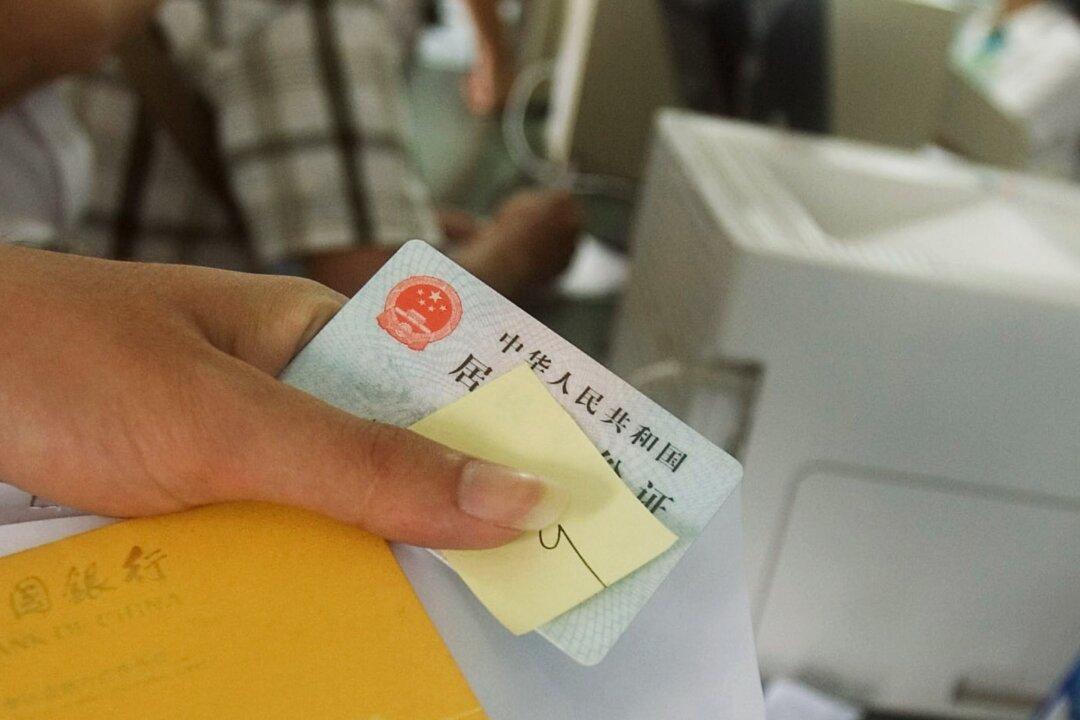Chinese media reports of a new identification card for citizens has generated much discussion on the internet—due to the amount of information that will reportedly be stored on it.
Third-Generation ID Card
The idea of upgrading the cards, which are used by all Chinese citizens, was first proposed by Huang Guangmiao, a member of the Chinese People’s Political Consultative Conference, a political advisory body, in March 2011.Official government websites indicate that the new ID card is still in the design phase.
But since April 9, many Chinese media have begun reporting on the card’s new technological features, noting that authorities will soon roll out the new ID.
The card also will integrate the functions of one’s banking card, credit card, social security card, and retailers’ loyalty or membership card into an all-in-one tool. One’s fingerprints, which are already stored on the current ID cards, can be used for verification purposes when making electronic payments with the new ID card.
The card will also store one’s biometric data, such as blood type and DNA information. The Sohu report explained that this feature can assist police in investigating criminal cases, as well as hospitals that may be seeking a matching organ donor.
Someone with a low credit score could be barred from taking public transportation or staying in hotels. Hundreds have been blocked from boarding airplanes because of low credit scores.
China’s ID Card System
After the Chinese Communist Party took power in 1949, the country didn’t initially implement an ID card system. People used family records or obtained an official letter from local authorities if they needed to verify their identity.In 1984, China rolled out the first-generation ID card, a black-and-white polyester film-wrapped paper card; but the card could be easily damaged and copied.
In January 2004, the Chinese regime upgraded that to a non-contact card with an embedded chip that stores the owner’s photo and his or her 10 fingerprints.
Authorities frequently check people’s ID cards for entry into trains, buses, and hotels. As a result, dissidents and many ethnic minorities who are closely monitored by the Chinese regime often can’t travel without being detected by police. To make travel possible, many turn to the black market for fake identification cards.





